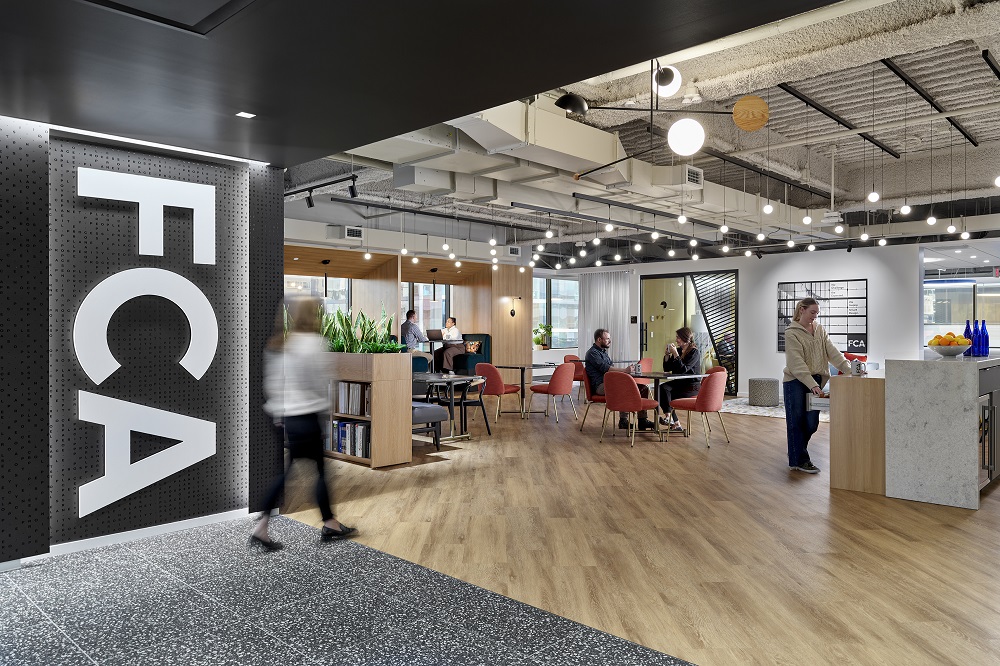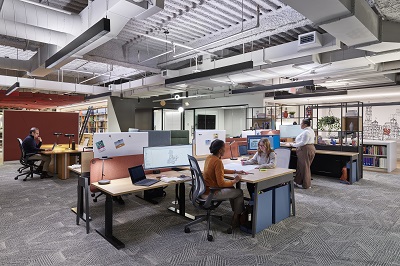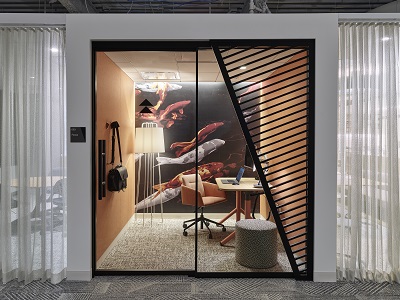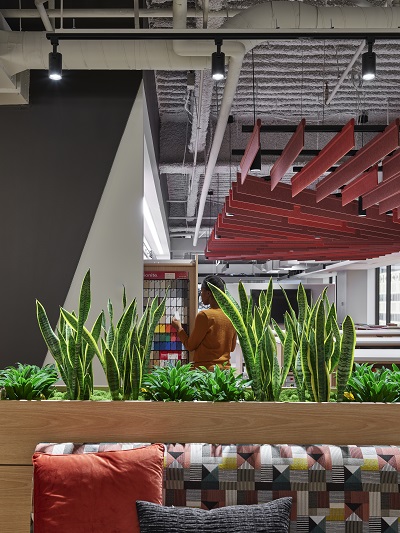The pandemic forced us to focus on the health and well-being of our bodies. Now as we look ahead to the future of work, the same focus should also be placed on our environments. While it is an individual pursuit, wellness is significantly influenced by our physical, social, and cultural environments.

The Global Wellness Institute (GWI) defines wellness as multi-dimensional, focusing on physical aspects and mental and emotional solutions. According to the GWI, wellness is not static, “but rather an ‘active pursuit’ that is associated with intentions, choices, and actions.”
If our own well-being is not static, then our workplaces should not be either.
Research has proven that there is a direct correlation between people’s working conditions and their stress levels, productivity, and performance. Research from McKinsey also suggests that social interactions at work can strongly influence health outcomes and promote innovation, engagement, and improve quality of work. Well-being is an investment in the employee experience that should not be overlooked.
FCA is a full-service architectural and design firm. Our team has been working diligently to weave sustainability and wellness into all facets of our company, with the goal of becoming leaders in sustainable design. So, when it was time to design our new Philadelphia headquarters, we wanted to ensure our space was reflective of that mission.
To fully understand what an ideal office would look like for FCA employees, we conducted various surveys and workshops to gather feedback and ideas. We did extensive research and due diligence to ensure we found the perfect space to meet our needs. We enlisted the help of multiple consultants and worked closely with them and our contractor to bring our vision to life. The result is a space that has been praised by staff as a dynamic environment that leaves them feeling energized at the end of the day. Staff are enthusiastic about the healthy offerings the new office provides and appreciate the thoughtful gestures that improve the workplace experience.

Inspired by the concept of “intersections,” we wanted our new office to serve as a central gathering space for employees to convene and collaborate. Spatially, the office creates many intersections which allow for more spontaneous interactions and opportunities for connection, but those collision points also give us an expanded view and the ability to see things from a unique perspective. The office also serves as an intersection of our history with our future and is a physical manifestation of our company culture, values, and our guiding principles of People, Place, Planet, Process, and Prosperity. We felt it was important to consider how the workplace “intersects” with the overall health and well-being of the occupants and looked for ways to implement healthy building practices into our design.
Our pursuit of both WELL and LEED certifications challenged our team to dive deeper into the strategies we felt would be most beneficial to our firm and support our new ways of working while also encouraging a healthy workplace.
Through various design features and solutions, we have created an agile workplace that caters to our employees’ diverse needs. A variety of workstyles, postures, and settings allows the user to choose the best place for them to work depending on the task at hand and encourages movement throughout the day. Soft boundaries are created with drapery and high-backed lounge furniture to provide a sense of privacy and protection. Research from Steelcase shows that when employees have a sense of control over their environment, it helps them to feel more empowered, engaged, and less stressed, so we aimed to increase the amount of user control and adjustability through ergonomic furniture, height-adjustable desks and adjustable lighting, as well as implementing a free address policy. Workspaces can be reserved through an online platform which allows staff to sit with their team members and experience the office from a different point of view every time they come in.

While many of us come into the office to collaborate, it is still crucial to provide space for people to do heads-down work. With this in mind, we designed five unique focus rooms which are themed to our five guiding principles and offer a quiet, enclosed space for phone calls or a day full of meetings. For people to be their most productive, they need time and space to relax and recharge, so our office features a wellness room with upholstery designed to re-energize users and a lactation room for nursing mothers. These places of respite go a long way in improving employee health and show that employers are invested in the well-being of their staff, both physically and mentally.
Biophilic design has been proven to have significant positive impacts on the occupants. Research from Terrapin states that access to nature views, vegetation, and daylight supports stress reduction, improves workplace performance, and reduces burnout risk. Organic shapes, patterns, colors, and indoor greenery have also been shown to improve the employee experience. After coming from a space that was monochromatic and static, the FCA staff is thrilled to have a new office that has warmth and depth through color, texture, pattern, and wood tones. The addition of live, low-maintenance plants also helps to bring life into the space and increases the connection to nature.

While it is largely about the built environment, company policies, goals, and mission statement are a large part of proving an organization is invested in their employees. In addition to the design elements in the physical office, FCA has also overhauled our company policies with a focus on physical and mental well-being. Staff can access various physical and mental health resources, education, and training including stress management and mindfulness programming.
In tandem with our office renovation, we worked with building management to design a new fitness center and outdoor pickleball court with discounted access for tenants. A variety of healthy food offerings, including fresh fruits and vegetables, and snacks and drinks that limit sugar and artificial ingredients, have proven to be a welcome alternative to the traditional options offered in vending machines. We have a comprehensive EDI policy which ensures that we provide an inclusive environment that fosters a sense of community. Understanding that prescriptive wellness plans are rarely effective, we instead aimed to create an environment where wellness can occur organically and subconsciously: purposefully giving a “nudge” to employees toward making healthy choices.
While FCA decided to pursue green building certifications for our space, the strategies we implemented can easily be applied to any project aiming to create a healthier environment for staff. Working closely with employees to understand their needs, as well as implementing intentional and inclusive policies, has a significant impact on the workplace experience and overall employee satisfaction. A successful, healthy workplace is the intersection of a well-designed physical space with a comprehensive approach to the mental and emotional needs of the occupants.
Rachel Ryan, NCIDQ, WELL AP, is an associate and project interior designer at FCA.
ASLSO READ: Top Trends in Healthy Buildings: A Guide for Facilities Managers
